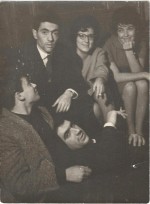The Great Patriotic War ended in 1945 but handling the repercussions of wartime destruction took several years longer. Debris had to be cleared from the grounds of the Institute of Technology, and department facilities and laboratories had to be rebuilt. The last remaining pillbox was dismantled in July 1946. The majority of restoration projects were completed by 1948. The heavily shelled New Chemical Building and the B-2 segment were not completely operational until the 1951/1952 academic year.
Following the victory in the Great Patriotic War, large-scale construction work began in Leningrad and throughout the country. In response to the acute demand for construction professionals, the LICT administration, led by A.Y. Pereverzev, developed training courses, which graduated 393 people in total.
Following the war, the Institute had three faculties: Chemistry, Inorganic Substances, and Organic Production. In April 1946, the Institute opened a mechanical faculty to train mechanical engineers and designers of chemical machinery and devices for chemical enterprises. In line with this, the university changed its name, once again becoming the Lensovet Leningrad Institute of Technology (LLIT) of the Order of the Red Banner of Labour.
1945 - 1985
The postwar period was a remarkable time when the restoration of the war-torn economy flowed seamlessly and imperceptibly into the process of constructing a new one. Following the end of the war, the USSR made significant strides, particularly in the development of the economy and infrastructure. Not only did the country manage to devise its own nuclear shield and master space technologies, but it also gasified cities and enterprises, supplied heat to residential buildings, and integrated never-before-seen electrical appliances into everyday life. Soviet Russia gradually transitioned from a rural to an industrial society. As a bustling metropolis and an industrial and scientific center, Leningrad was at the heart of ground-breaking developments. Jet engines and turbines for hydroelectric power plants were constructed, as were the world's deepest subway and icebreakers with nuclear power reactors. Leningrad scientists also designed the world's first microelectronic control computer and built the world's largest telescope. The city, which had been on the brink of annihilation in 1941, not only rebounded but evolved into a nexus of modern civilization.
A number of issues beset the postwar resurgence of science. There were few scientists and skilled laboratory assistants, in addition to the scarcity of equipment and reagents that could not be immediately supplied. Regardless of these obstacles, the volume of research work expanded steadily at the Institute. 42 research projects totaling one million rubles were completed in 1944, while 72 projects totaling 5.8 million rubles were developed by 1946.
During the Great Patriotic War, scientists used all of their knowledge, expertise, and innovative potential to support the collective war effort. Many civilian technologies found their way into military applications. The situation was reversed after the Victory, when military developments were reimagined for peacetime purposes.
As an example, in 1946, W.G. Nemets transferred a number of compounds obtained during the execution of defense projects to the Soviet Union's sole laboratory of Experimental Cancer Chemotherapy at the Scientific Research Institute of Oncology. Medical researchers investigated the physiological effects of these chemicals and developed a variety of efficient anticancer medications, including Dopan and Nordopan.
Other medicinal advances were made in the Laboratory of Dyeing Substances headed by A.Y. Poray-Koshits. In 1946, the Laboratory collaborated with the Naval Medical Academy on the synthesis and analysis of biological activity in a variety of benzymidazole derivatives. As a result of these efforts, the medicine Dibazol was developed by O.F. Ginzburg. This successful initiative laid the groundwork for systematic medical research, notably in the realm of anticancer pharmaceuticals. In 1948, the Department of Print Graphics took the Krasny Vyborzhets plant under patronage. This marked the beginning of LLIT's close collaboration with enterprises and factories in Leningrad. The Institute's employees delivered more than 1100 lectures and offered expertise to workers. Professors S. N. Danilov and A. Ya. Drinberg, as well as associate professors S. G. Zhavoronok, I. S. Okhrimenko, and others, worked in 32 technical councils. Strategic partnerships were developed with 170 domestic enterprises. Some employees also delivered lectures for students. LLIT organized citywide seminars for workers.
The Department was established in 1948 by an outstanding representative of science and industry, Professor N.A. Kozulin. The advent of polymers in all spheres of human life required cadres of trained specialists to design and build equipment for processing polymer materials into finished products. Starting in the mid-1950s, the Department began to graduate a wide range of mechanical engineers. From the 1960s into the 1990s, the Department established training laboratories for teaching disciplines such as Hydraulics and Hydraulic Machines, Machines and Apparatuses of Chemical Production, and Biotechnology. In 1982 and 1992, two editions of the Department’s own textbook were published and were popular across technological universities in the USSR and then in Russia. The book was titled “Machines and Apparatuses of Chemical Production: examples and tasks. A textbook for universities teaching the specialty “Machines and apparatuses of chemical production and construction supplies”. The Department began training students in the Technological Machines and Equipment Master’s program in 2015, and in the Construction Master’s program in 2016. 2017 marked the first graduation of Master’s students who obtained employment at OOO Strongarm, which is one of the leading companies developing transportation systems for oil and petroleum products. The Department actively collaborates with foreign partners. Students have gone on summer internships and pre-graduate practical workshops to top educational institutions in Germany, Finland, and France since 2008. Well-known scientists from the world's top universities are frequently invited to give lectures on behalf of the Department. Today the Department is headed by Doctor of Technical Sciences, Professor R.Sh. Abiev.
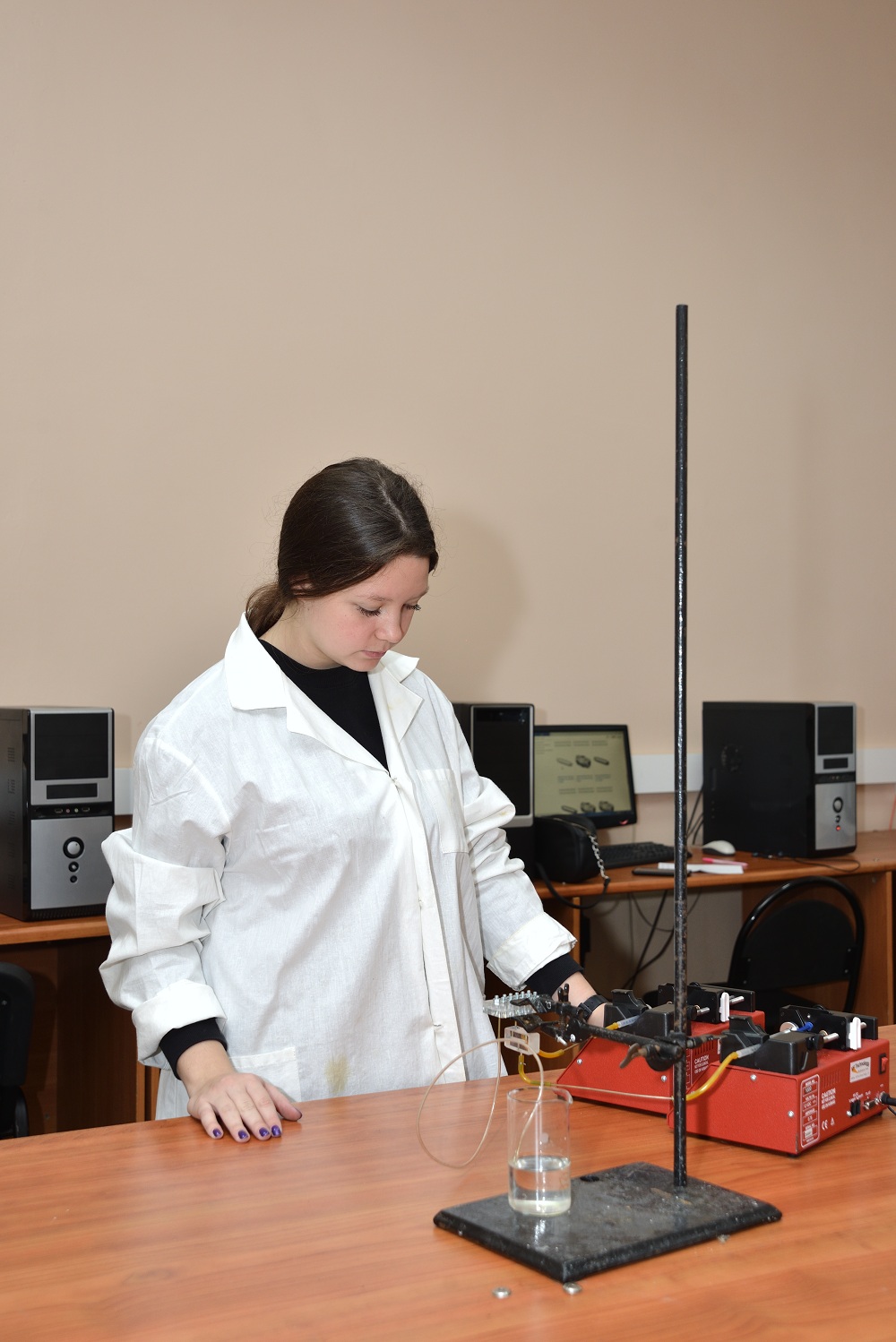
- Intensification of petrochemical and oil refining processes
- Mechanical equipment and technological complexes for enterprises manufacturing construction materials, products and structures
- Mechanical, engineering, and automation support for construction
- Technological equipment for chemical and petrochemical enterprises
The expansion of the Soviet nuclear program, which began in the 1940s, necessitated the development of training in nuclear science. LLIT welcomed a new Engineering Physics and Chemistry Faculty on September 1, 1949. Its purpose was to train experts in nuclear energy and environmental protection.
The new faculty, headed by Associate Professor I.A. Kuzin, was divided into three departments: Nuclear Physics (K.A. Petrzhak), Uranium, Radium, and Thorium Technology (A.B. Dranovsky), and Radiochemistry (A.A. Grinberg).
The growth in the number of specializations allowed for an increase in student enrollment. In the early postwar years, however, prospective students were scarce and insufficiently trained.
To attract the most promising candidates, the LLIT staff actively promoted the Institute in schools and workplaces, particularly during industrial internships. They also broadcast advertisements and organized open houses during which renowned scientists from the Institute of Technology delivered lectures on a variety of subjects. As a result, the number of students at the Institute increased nearly threefold between 1945 and 1951, rising from 1200 to 3400.
The Department was founded in 1949 as part of the Faculty of Physico-Technical Engineering. It was headed by A.A. Grinberg who was a member of the Uranium Commission of the Academy of Sciences of the USSR and one of the leading scientists at the Radium Institute, where national atomic science had been established. Since its inception, scientists employed by the Department have been known as exceptional educators and researchers. In the spring of 1950, the first group of physicochemical engineers graduated from this new study program. Research conducted by the Department found wide real-world applications. Notably, many developments were implemented by the Research Institute of Nuclear Reactors (in the city of Dimitrovgrad) following the deactivation of the MIR reactor. In the aftermath of the Chernobyl disaster, the Department's personnel assisted in the liquidation of the repercussions on the third and fourth blocks by using their scientific expertise to localize radioactive waste. The Department's scientific and methodological advancements in the field of radiation safety of non-nuclear products were included in the regulatory documentation adopted by the Ministry of Energy of the Russian Federation. Today, the Department is headed by Candidate of Chemical Sciences, Associate Professor V.A. Doilnitsyn.
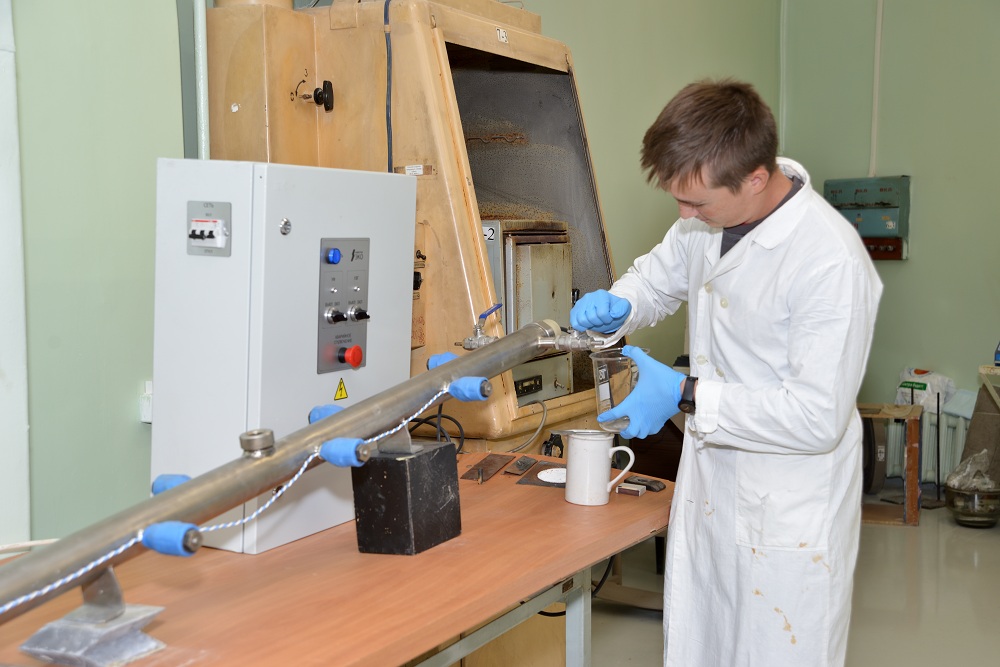
- Decontamination of installations and equipment
- Legal and social aspects of ensuring radioecological safety
- Prevention of accidents
- Radioactive waste management
- Radioecological problems of the nuclear fuel cycle, decommissioning of nuclear installations
- Rehabilitation of contaminated territories and facilities
- Technology of heat carriers in nuclear power plants
The Department was formed in 1949. It was founded on the initiative of Professor K.A. Petrzhak, a Doctor of Chemical Sciences and one of I.V. Kurchatov's top students. K.A. Petrzhak led it for the subsequent 22 years. The Department has traditionally been a place where remarkable, bright, and highly erudite lecturers and researchers congregated, and where future graduates gained a broad scientific perspective coupled with an unbridled taste and enthusiasm for research work. The Department trains specialists (engineers) in the Chemical Technology of Modern Energy Materials, as well as Candidates and Doctors of Science in the specialty of High-Energy Chemistry. Graduates of the Department pursue careers at enterprises as well as research and design institutes dealing with nuclear energy, radiation technology, and radiation material science. Fundamentally, research focuses on the development of new radiation-curable composite materials, the radiation-chemical synthesis of copolymers based on vinyl pyrrolidine, the radiation-chemical synthesis of medication Vitamedin M, the development of high-power radio-luminescent sources, and the development and manufacture of solid-state breakdown detectors. Today, the Department is headed by Doctor of Chemical Sciences, Professor I.V. Yudin.
- Applied nuclear physics
- Methods of analytical control in the production of materials for the power industry, technology of radiation and chemical production
- Radiation chemistry
- Radiation materials science
- Solid-state physics
The Department was founded in 1949 as part of the Faculty of Engineering Physics and Chemistry and was first headed by Associate Professor A.B. Dranovsky. I.A. Kuzin was a professor and Doctor of Technical Sciences who led the department from 1953 to 1975. He was instrumental in its growth and recognition as a high-quality educational and research institution. As a talented scientist and an excellent coordinator, I.A. Kuzin established a scientific school in a number of fields. Notably, I.A. Kuzin directed research on the physicochemical properties of carbon sorbents, particularly active carbons, and developed methods to selectively modify them and use them to address technological challenges of rare, radioactive, nonferrous, and precious metals, as well as high-purity chemicals, including hemosorption. I.A. Kuzin also devised methods for the complex processing of uranium, thorium, and raw rare earth materials. The scope of research expanded as the Department and the Institute grew. Today, research is conducted at the request of leading Russian and foreign enterprises and revolves around developing new methods for extracting valuable components during the processing of natural and man-made raw materials to thereby ameliorate the separation of rare elements with similar properties. Regarding future projects, some of the Department's key goals are to expand student training through a blend of basic and practical research and enhance cooperation between members of staff, teaching assistants, and students. Today, the Department is headed by Doctor of Technical Sciences, Professor A.A. Blokhin.
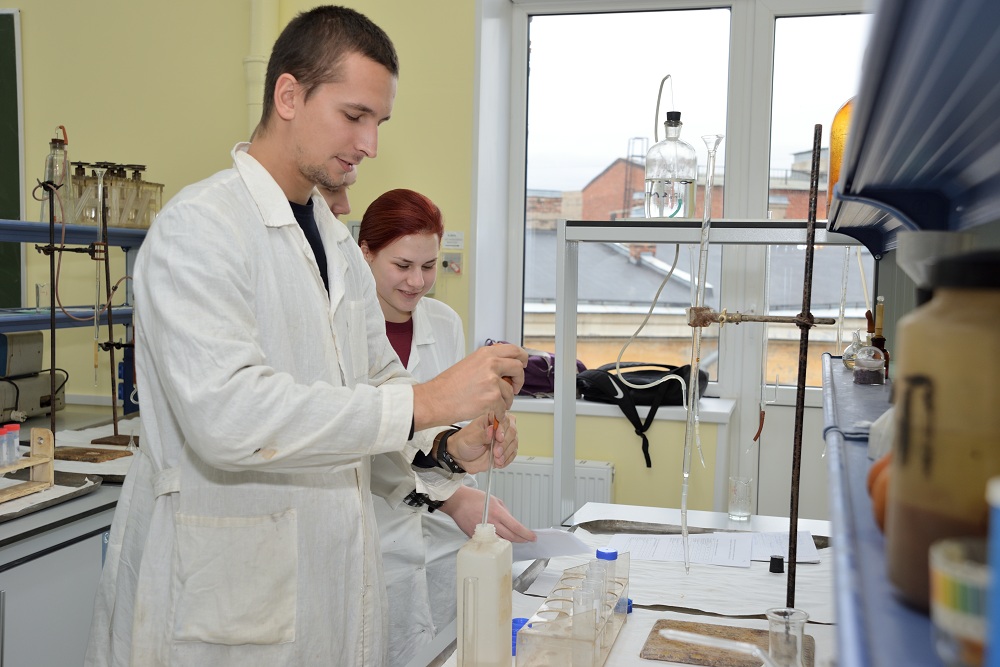
- Ceramic fuel technology
- Chemistry and technology of rare noble and refractory metals
- Equipment for the production of rare elements
- Extraction processes in the technology of rare and radioactive elements
- Fundamentals of radioecology
- Ion exchange processes in the technology of rare and radioactive elements
- Physicochemical fundamentals of high-purity substance technology
- Physicochemical fundamentals of hydrometallurgical processes
- Radiation safety of chemical and technological processes
- Radiochemical processing of spent nuclear fuel
In the 1950s, research at the Institute took multiple directions. Under the guidance of S.N. Ushakov (1893–1964), the Department of Plastics Technology developed original technology for cellulose esters, synthetic camphor, polyvinyl acetate, and other polymers, which underpinned over 20 new productions of Soviet industry. A.F. Dobryansky (1885-1965), the head of the Department of Pyrogenetic Processes, undertook a number of pivotal investigations in the field of oil refining technology and developed a standard categorization of fossil fuels. V.B. Aleskovsky (1912–2006), who took charge of the Department of Analytical Chemistry in 1949, developed the Backbone Theory, which served as the foundation for a number of precision methods of inorganic synthesis known as “chemical self-assembly”.
E.L. Golod (1929–2009), who graduated in 1953, became an outstanding specialist in adamantanes. L.Ya. Tereshchenko (born in 1929) headed the Institute of Textile and Light Industry in the late 1980s. V.V. Zelentsov (1930-2006) was an academician of the Russian Academy of Natural Sciences. By 1958, the Institute of Technology had evolved into a research hub for countless industrial enterprises, not only in Leningrad but across the Soviet Union.
The Department was established in 1957. Professor P.A. Obnovlensky, a Doctor of Technical Sciences, was the Department's first head, leading it for nearly 30 years, from 1957 to 1986. During the postwar years, as the country set about restoring its economy, there was a pressing need for extensive modernization of production and increasing productivity, neither of which could be accomplished without full automation of technology. Overcoming this challenge was the Department's mission. As one of its first major milestones, the Department established a complex research laboratory in 1959 to foster the necessary developments. Currently, the Department awards Bachelor's and Master's degrees in full-time and part-time study programs such as Technical System Management and Automation of Technological Processes and Enterprises. The Department holds immense scientific and pedagogic potential. Starting in 1978, researchers published an interuniversity collection of works titled “Systems and means of automation of potentially dangerous processes in chemical technology”, which highlighted peer achievements in related areas, focusing on those accomplished by universities located in the European part of the country. This collection was reissued annually for 15 years. The Department is now headed by Honored Worker of Higher Professional Education, Doctor of Technical Sciences, Professor L.A. Rusinov.
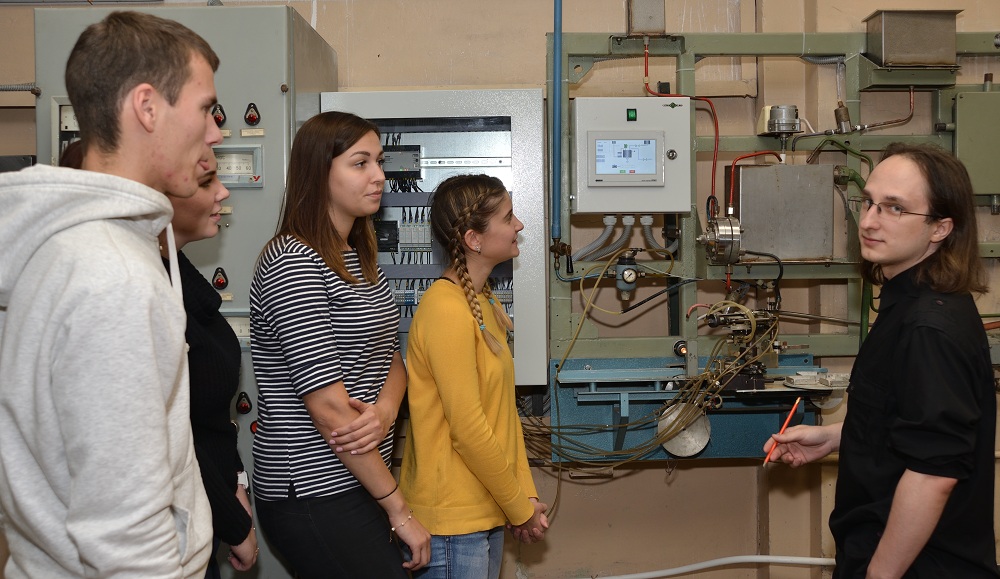
- APC system-based computer control of complex oil and gas processes
- Creation of discrete and continuous automatic systems for regulating technological flows of liquid, bulk, and multiphase media
- Creation of multifunctional automation equipment, in particular, intelligent thermal control systems for the composition and flow of multicomponent technological media
- Development of methods for the synthesis of intelligent operational control systems and diagnostics of potentially dangerous technological processes
- Development of new principles for the construction of robust automatic control systems for linear and nonlinear objects of chemical technology
Graduates and scholars of the Institute of Technology contributed greatly to the development of the transportation system in Russia. They designed new steam locomotives and improved internal combustion engines throughout the 19th century. From 1944 until 1954, the Department of Electrothermal Production Technology conducted research on carbon graphite materials and abrasives. Their findings were used to improve the mechanism for trolleybus pantographs.
Technolozhka actively participated in the construction of the Leningrad Metro. On Sundays, student construction teams worked on the metro's first section route. The key interchange station between the 1st and 2nd lines was named “Tekhnologichesky Institut” (Institute of Technology).
The Avtovo station's iconic glass columns were built with artificially pressed glass resembling crystal. N.N. Kachalov, the father of the industrial use of artificial glass and the founder of the Department of Glass Technology at LLIT, was instrumental in the development and manufacture of this material. G.T. Petrovsky and K.S. Evstropyev, the latter of whom headed the Department from 1960 on, became worthy successors to N. N. Kachalov’s scientific legacy.
Starting in 1948, the Institute of Technology trained specialists for the chemical industries of the socialist Eastern European and Far Eastern countries. LLIT created the Department of Russian Language for Foreigners in 1955 and the Dean's Office for Cooperation with International Students in 1956. By that point, 106 engineers and 26 graduate students from socialist countries had been fully trained. LLIT graduates helped organize new production facilities and brought cutting-edge technology to enterprises in the USSR and overseas.
In the summer of 1949, the first brigade of student volunteers was created at LLIT. This type of work provided future process engineers with hands-on experience in their field.
The notion of joining construction teams was gaining traction among students, and the number of teams was growing. The range of student activities gradually expanded, and the areas of operation of the LLIT construction teams spread from the Arctic to Kazakhstan.
In 1958, the LLIT Komsomol organization was awarded an Honor Certificate by the Komsomol Central Committee for active participation in the construction of the Baltic Power Plant (today's Narva Power Plant situated in Estonia) and an Honorary Diploma of the Central Committee of the Kazakh Komsomol for active participation in the Virgin Lands campaign. The LLIT construction teams assisted in the reconstruction of Kyrgyzstan following the 1970 earthquake, as well as restoration works on the Kola Peninsula in later years. When construction of the Soviet “Great Chemistry” facilities began in Biysk, Altai in 1975, LLIT students seized the opportunity to assist in the project's execution. Some of them went on to work for the chemical companies that were established there.
International detachments, which included students from Bulgaria, East Germany (GDR), Poland, Czechoslovakia, and other countries, held a special place in the system of construction teams. They worked not only on the territory of the USSR but also in foreign manufacturing locations, such as the metallurgical plant in Kladno (Czechoslovakia) and the V. Ulbricht chemical facility in Merseburg, GDR.
The 1950s and 1960s were a time of great scientific advances in a variety of sectors. Space and nuclear technology, optical innovations, and polymer chemistry all reached fundamentally new heights. The pace of scientific and technological progress necessitated adjustments in the system of higher technical education. Technical universities needed to increase both the number of graduates sought-after by the fast-growing economy and the range of topics and specialties in which they were trained.
During this time period, the main task for LLIT was to devise an educational system for both undergraduate and graduate students that would prepare them to take on the challenges of modern production. In the 1955/1956 academic year, Technolozhka resumed evening classes, which had been discontinued in the late 1930s, and the LLIT administration reintroduced correspondence courses in the 1958/1959 academic year. Preparatory classes began at the Institute in 1956/1957. By the beginning of the 1959/60 academic year, nearly 4,000 students had enrolled at the Institute.
The first collection of scientific papers written by Technolozhka students was published in 1956.
The well-known Soviet poets Anatoly Naiman, Evgeny Rein, and Dmitry Bobyshev graduated from LLIT in the late 1950s. As the turbulent 1960s started to unfold, the heyday of Russian art and culture in the Soviet period began. Many students (and later graduates) of Technolozhka had a strong connection with the legendary poetess Anna Akhmatova, who was the most prominent figure in Leningrad’s literary circles. Young poets would publish their writings in Samizdat. The “technological poets” collaborated with Joseph Brodsky and Sergey Dovlatov to develop a special body of Leningrad literature, which became one of the key components of the Russian literary environment in the post-1960s.
In 1960, enterprises began to delegate young workers, the so-called “napravlentsy”, to specialized training at higher educational institutions. Many of them became students at LLIT. Employees of the Saratov Technical Glass Factory, the Pervomaisky Porcelain Factory, and the Leningrad factories Svetlana, Ilyich, and Sevkabel were among the first 137 students.
An increasing number of LLIT graduates continued their research after graduation. During the post-war decade, the number of postgraduate students increased almost tenfold and most managed to defend their dissertations on time.
The Department of Philosophy was founded in 1964, when the Department of Marxism-Leninism was split into two independent departments—the History of the CPSU and Philosophy. In the 1970s and 1980s, the Department of Philosophy was headed by a prominent specialist in the history of Marxist-Leninist philosophy, Doctor of Philosophy and Professor V.I. Klushin. In addition to the main course of philosophy, the Department’s teachers read numerous special elective courses for students on current themes of philosophy, such as ancient Russian culture, logic, the philosophy of technology, and religious studies. Associate Professor V.N. Dudenkov, who was known as a talented orator and polemicist, delivered particularly popular courses on aesthetics and modern art. The Faculty of Humanities was founded in 1990 on the basis of the Faculty of Social Sciences. It included Departments of Philosophy, History, Sociology, Physical Education, and Foreign Languages. Teachers in the Department of Philosophy have created new courses for students. The Department trains undergraduates and specialists in the courses of Philosophy, Logic and Theory of Argumentation, Introduction to Logic and Intellectual Activity. More courses for postgraduates include Logic and Methodological Foundations of Scientific Knowledge, Models of Collective Decision-making, and Ethics. The Department's staff works to train future specialists to develop their spiritual side and become creative, self-conscious and proactive individuals capable of acting in challenging socioeconomic situations. Today the Department is headed by Candidate of Philosophical Sciences, Associate Professor V. E. Bydanov.
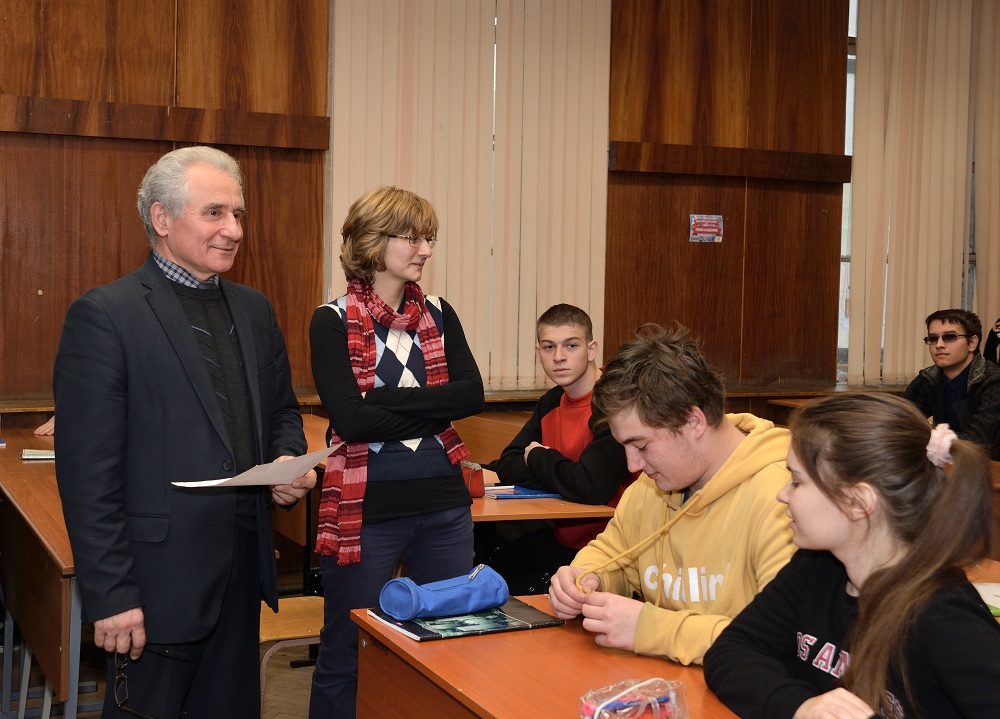
- Art and literature
- Concepts of modern natural science
- Ethics
- Ethics in scientific and business communication
- History and philosophy of science
- Logic and introduction to intellectual activity
- Logic and methodology of scientific cognition
- Logic and theory of argumentation
- Models of collective decision-making
- Philosophy
- Philosophy of chemistry
- Philosophy of natural science
- Philosophy of science and technology
- Psychology
In the 1960s, the Leningrad Institute of Technology established its main areas of research, which remained unchanged until the end of the 20th century. LLIT conducted research on the properties of traditional chemical materials (rubber, glass, ceramics, varnishes and paints, binders, refractories, etc.) and new chemical products (plastics, cermets, catalysts, sorbents, radioactive compounds, etc.). The Institute’s researchers also developed technological optimization methods to produce these materials.
The Department was established in 1965. It was first headed by Doctor of Technical Sciences, Professor R.G. Mirzoev. The Department became one of the first of this type in Russia, and the only one in Leningrad and the whole Russian north-west. It remains so today. Initially, the staff focused on equipping new laboratories, establishing special academic disciplines, and designing curricula and study programs. The year 1974 brought about significant changes to the curriculum. Mainly, new programs of study were created in addition to the traditional disciplines tied to polymer engineering, such as special sections on the physics, mechanics, and rheology of polymers.
Moreover, methods of modifying polymers by exposing them to various localized fields were researched and developed. In the 1980s, these programs were revised and amended. Creating automated, environmentally safe production facilities was in high demand at the time. Consequently, a robotics laboratory was founded at the Department. In the 1990s, the Department launched a new specialization called Computer Graphics and Design of Machines and Apparatuses, which included lectures on Ergonomics and the Fundamentals of Artistic Design. The International Center for Training and Retraining of Plastics Processing Specialists was opened at the Department in 2002. The staff places great emphasis on strengthening ties with enterprises in the plastics processing industry. The teachers and researchers employed by the Department have received widespread international recognition and published in leading scientific journals and conference proceedings in Germany, the Czech Republic, the USA, China, India, South Korea, the Republic of South Africa, and other countries. Nowadays, the Department is headed by Doctor of Technical Sciences, Professor V.P. Britov.
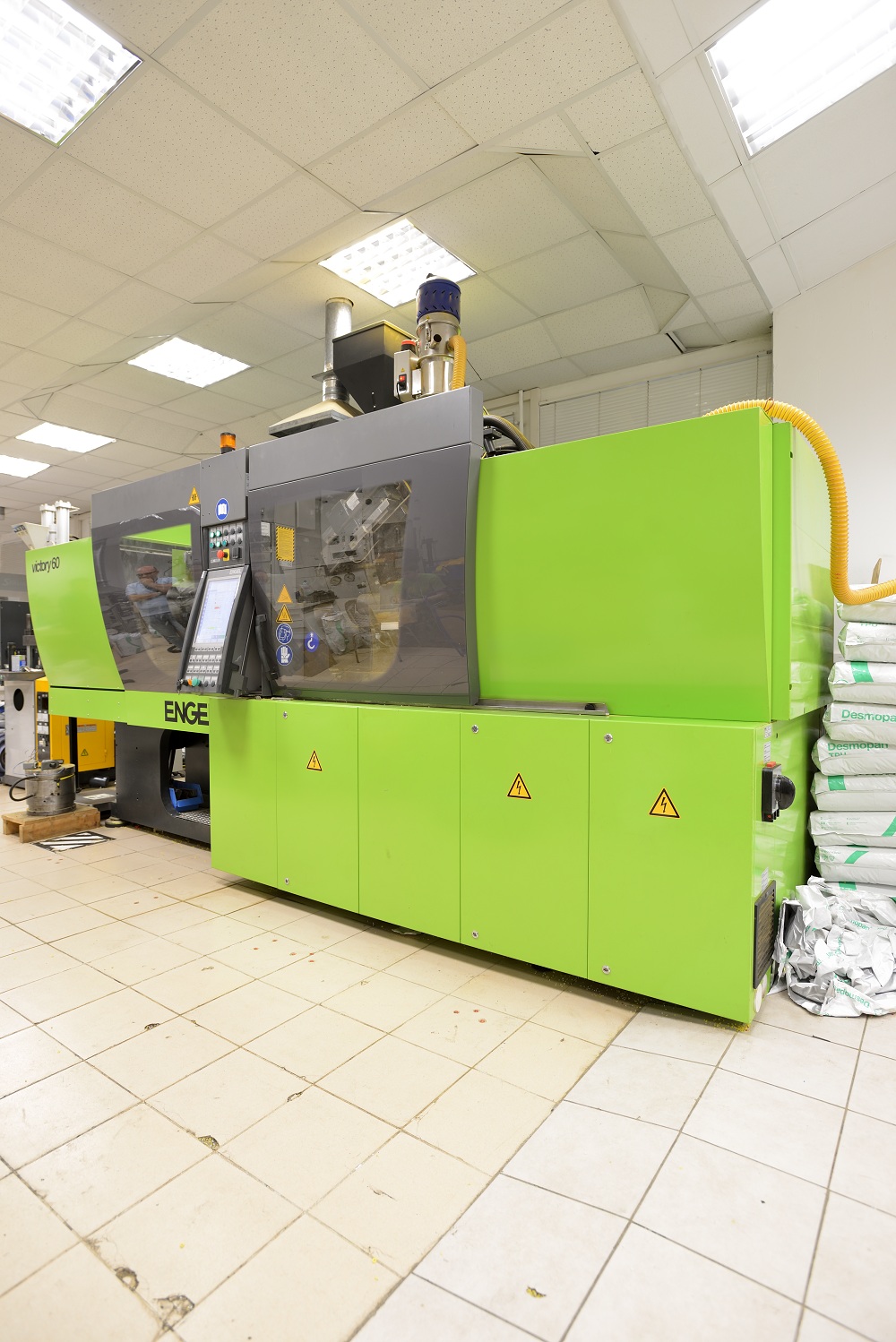
- Design and CAD modelling of forming tools
- Flexible automated production of plastic products
- Industrial Robotics
Technolozhka employees improved existing processes in chemical technology and developed fundamentally new, highly efficient ones. They designed machines and apparatuses for the chemical and petrochemical industries. The LLIT researchers also studied the physico-chemical properties of multicomponent systems as well as the relationship between the structure, the physical properties, and the reactivity of organic compounds.
In parallel to robust scientific development, cultural life was thriving at Technolozhka during this time period. The students were passionate about more than just science. The “Thea Workshop”, a theatrical workshop that evolved into a studio theater in 1959, played an essential role in the cultural life of the Institute. It featured notable Soviet actors A.V. Myagkov and T.M. Abrosimova. L.D. Eidlin and S.T. Altov, both LLIT graduates, chose to perform on stage as well. In 2008, Semyon Altov was appointed an honorary professor at SPSIT(TU).
In 1966, LLIT underwent administrative changes and transitioned into the new organizational framework of a technical university. The Institute's departments were divided into two groups of faculties: General Engineering Faculties for students in their first through third years of study (Chemical, Physico-Chemical, and Mathematical-Technical) and the Profiled Faculties (Technologies of Organic Substances, Physico-Chemical Engineering, Technologies of Silicates and Inorganic Substances, Chemical-Technological Engineering, and Cybernetic Engineering). Conditions were set to unify junior course training and raise the level of senior course training.
LLIT began to train specialists in 29 programs and 10 specializations. The Institute of Technology was regarded as a university owing to the type and quality of its teaching, but it also operated as a technical institute in terms of its main areas of research.
The notion of integrating science and athletics was immensely popular in the Soviet Union throughout the 1950s and 1960s. Many notable athletes enrolled in LLIT around this period. Regrettably, not all of them were able to graduate due to the stringent teaching standards at Technolozhka. Yu.A. Morozov, a brilliant football coach, was one of the exceptions. He proceeded to postgraduate school after graduating from LLIT and worked on a dissertation but declined to finish it, expressing honestly that he preferred pursuing a career in professional football.
The Department was established in 1965. Professor P.A. Kulle, a skilled scientist and an exceptional leader in research policy, was the Department's first chairman. In addition to managing the Department, P.A. Kulle was the dean of the Faculty of Mechanics, where he developed a new research area on the application of modern computer technologies in chemical technology. The Institute has progressed through all stages of computer technology development, from electronic computing machines such as Setun and Razdan to personal computers, and from basic coding to software engineering. The Institute's Scientific Council agreed in 2012 to establish the Department of System Analysis after uniting a cluster of departments, including the Departments of Mathematical Modeling and Optimization of Chemical and Technological Processes. In addition to this department, the new division included the Departments of Information Systems in Chemical Technology and Applied Mathematics. The Department was further expanded by the inclusion of personnel from the Departments of Physics, Processes and Apparatuses, Computer-aided Design, and Control Systems. Professor V.I. Halimon, a Doctor of Technical Sciences, led the new joint department. Currently, its research work is linked to the creation of theoretical and software-algorithmic environments for the synthesis of automated technological complexes based on intelligent analysis, modeling, and control systems. It focuses on establishing mathematical models, databases, and testing systems for use in education, as well as designing algorithms and software that account for experimental data from processes and consider the peculiarities of their flow. Today, the Department is headed by Doctor of Technical Sciences, Professor A.A. Musayev.
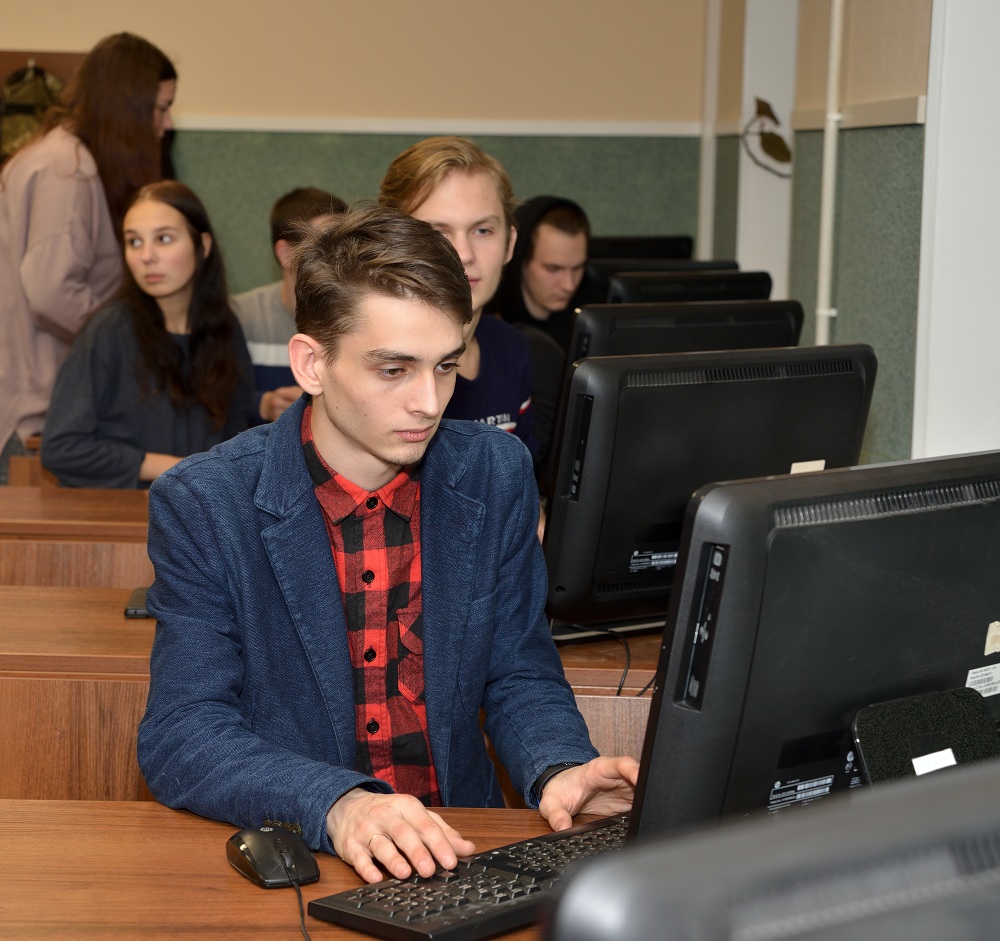
- Application software products and systems
- Applied mathematics
- Chemical and technological systems, optimization, and resource conservation
- Computational mathematics
- Computer science
- Data mining
- Databases
- Discrete mathematics
- Formalized methods of building control systems for chemical and technological processes
- Fundamentals of procedural and structural programming of system analysis tasks of chemical technology facilities
- Fundamentals of scientific research
- Information modeling programs for analysis and synthesis of chemical and technological systems
- IT technologies
- Mathematical programming
- Methods for planning experiments
- Methods of object-oriented programming of system analysis tasks of chemical technology facilities
- Methods of visual interface design in applied tasks of chemical technology units
- Modeling of chemical technology units
- Modeling of systems
- Models and methods for describing discrete technological processes
- Optimization of chemical technology facilities
- Probability theory and mathematical statistics
- Software development project management and applied system analytics
- System analysis of chemical technologies
- System analysis, optimization and decision-making
- Theory and technology of programming
- Theory of information systems
- Theory of random processes
The Department was established in 1965 following the fusion of two previously existing departments: Engineering Technology and Materials Science. It was first headed by a well-known specialist in the field of accuracy and interchangeability, Associate Professor V.N. Gostev. In 1976, the Department was headed by Professor G.M. Klimashin, who devoted a lot of his attention to the methods and organization of teaching at the Department. New courses of lectures on the Technology of Structural Materials and Materials Science and Processing of Structural Materials were introduced under his guidance and with his direct participation. From 1996 to 2006, the Department was headed by Professor A.I. Kuznetsov. Under his direction, the Department developed new glasses with improved dielectric, mechanical, and other performance characteristics for vacuum-tight junctions with various metals and alloys. The Materials Science and Technology of Materials program trains bachelors, masters, and postgraduates. P.V. Matveichikova, a graduate from the Department, was named St. Petersburg's best student of the year in 2017. L.A. Lebedev, another graduate student, won the “Young Shipbuilder—Engineer of the Year” competition. K.A. Ogurtsov, a young researcher from the Department, won a government funding competition in St. Petersburg. Today, the Department is headed by Doctor of Technical Sciences, Professor M.M. Sychev.
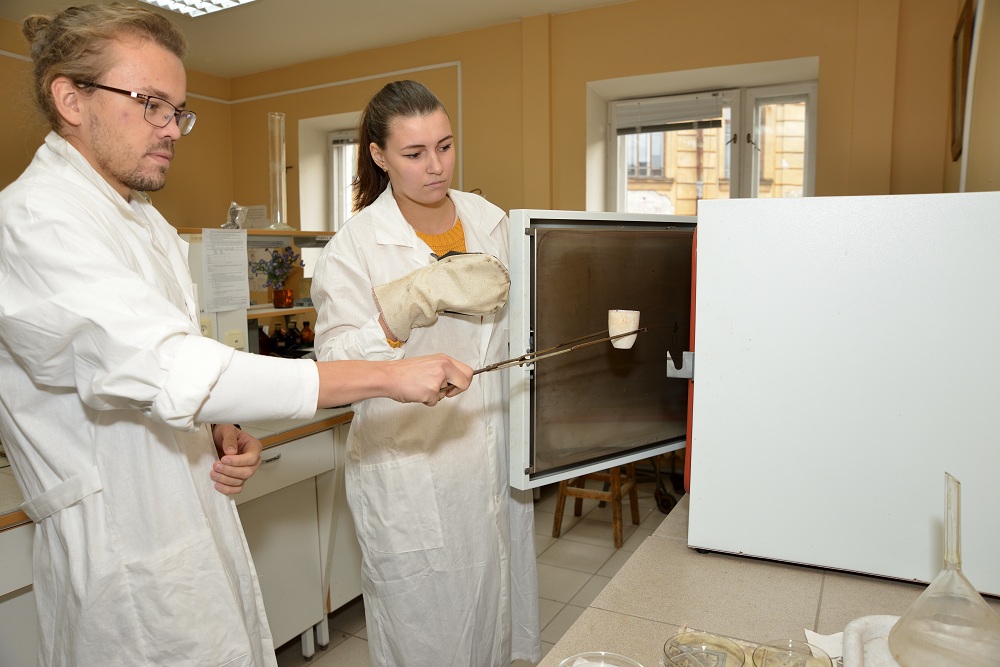
- Amorphous materials for optics and photonics
- Chemical resistance of building materials
- Chemical resistance of materials and corrosion protection
- Fundamentals of metrology, standardization, and interchangeability
- Fundamentals of optoelectronics
- General materials science and materials technology
- Information technology in solid-state materials science
- Materials for lighting, optoelectronics, and displays
- Materials science and technologies of modern and promising materials
- Materials science in chemistry
- Methods of research on optical and lighting materials
- Metrology, standardization, and certification
- Nanomaterials and nanotechnologies
- New construction materials
- Photometry and metrology of displays
- Solid-state physics
- Special issues of materials science
- Technology of structural materials
- Theoretical and experimental research methods
- Tolerances and fits
Conducting a large volume of wide-scale scientific research as well as the establishment of essential departments, research institutes, design bureaus, and an experimental base at the Institute allowed for the organization of individualized senior courses. Students' share of independent research work increased: 60% of study time was to be devoted to lectures, laboratory work, seminars, and course projects, while the remaining time was utilized for research or design work carried out by students at the Institute's profile departments or relevant enterprises. Natural gas usage in the chemical industry surged in the 1960s, and most organic synthesis operations switched to petrochemical raw materials. Large superphosphate, nitrogen fertilizer, synthetic rubber, potash, and other plants were established.
Wear-resistant rubber, new sorbents and catalysts, as well as new electrochemical coatings made of metals, alloys, oxides, salts, and polymers, were developed as a result of many years of research at Technolozhka. Likewise, new heat-resistant materials such as kermets, new grades of glasses, acid- and alkali-resistant enamels, water-based paints, and other valuable materials were created by the collective effort of the LLIT personnel. Technolozhka researchers were also able to construct new devices for automatic chemical analysis, design new chemical equipment, generate automation tools, and many other devices and apparatuses. All of this was implemented in the industry. LLIT was named one of the top 25 institutions in the country for its accomplishments in science.
The curriculum established by the Institute, the new charter, and the basic principles and methods of teaching at LLIT were all approved in 1967. The syllabi for the cycle of chemical disciplines, developed by the collective effort of a number of the Institute’s departments, became an accepted standard for all chemical and technological universities in the USSR and were all sanctioned by the Methodological Department of the Ministry of Higher and Secondary Special Education.
The commissioning of major biotechnological complexes such as the Kirishi Biotech Progress facility in the 1960s boosted the demand for qualified personnel in biotechnological engineering and mechanics. As a response to this challenge, LLIT launched the Faculty of Biotechnology.
The research collectives at the Institute's departments and labs grew, as did the volume of scientific and technological research on industrial issues. The Institute began to develop projects in the fields of petrochemistry, microbiological synthesis, solid chemistry, phototropic chemistry, plasma chemistry, electrophoretic coatings, etc.
On a broad scale, new methods for the manufacturing of superphosphate, polyvinyl alcohol with higher thermal stability, epoxy resins, diketene, and selective insecticides were developed and applied. LLIT researchers devised a technique for producing polyurethanes from dicarboxylic acids derived from Baltic shale and citral. They developed novel silicate and ceramic materials as well as new concentration and analytical procedures. As a result, the employment of high-intensity technological processes, such as the foam technique of gas-liquid interaction and processes in the fluidized bed, has increased.
The Department was established in 1966 on the basis of the Department of General Chemical Technology and the branch Laboratory of Contact-catalytic Processes in the Fluidized Bed. It was the first department of catalyst technology in the USSR. It was headed by an outstanding scientist and research administrator, Doctor of Technical Sciences, Professor I.P. Mukhlenov. In the early years of the Department, research was concentrated on developing catalysts for use in the boiling and filtering layers and the study of mass and heat exchange processes under intensive modes of interaction between gases and liquids. The scientists A.Ya. Averbukh, E.Y. Tarat, and A.T. Bartov were instrumental in the establishment of the Department of Catalyst Technology. The Department of Catalyst Technology has developed partnerships with the chemical plants in Gomel, Cherepovets, and Novgorod, as well as the Novomoskovsky, Nevsky, and Voskresensky plants, the Krasny Khimik (Red Chemist) plant, the GIPH (Russian Research Center of Applied Chemistry), and the NYIF (Samoilov Scientific Research Institute for Fertilizers and Insectofungicides), among others. Currently, research is centered on the present-day problems of creating environmentally friendly technologies and environmental protection. Today, the Department is headed by Candidate of Technical Sciences, Associate Professor A.Yu. Postnov.
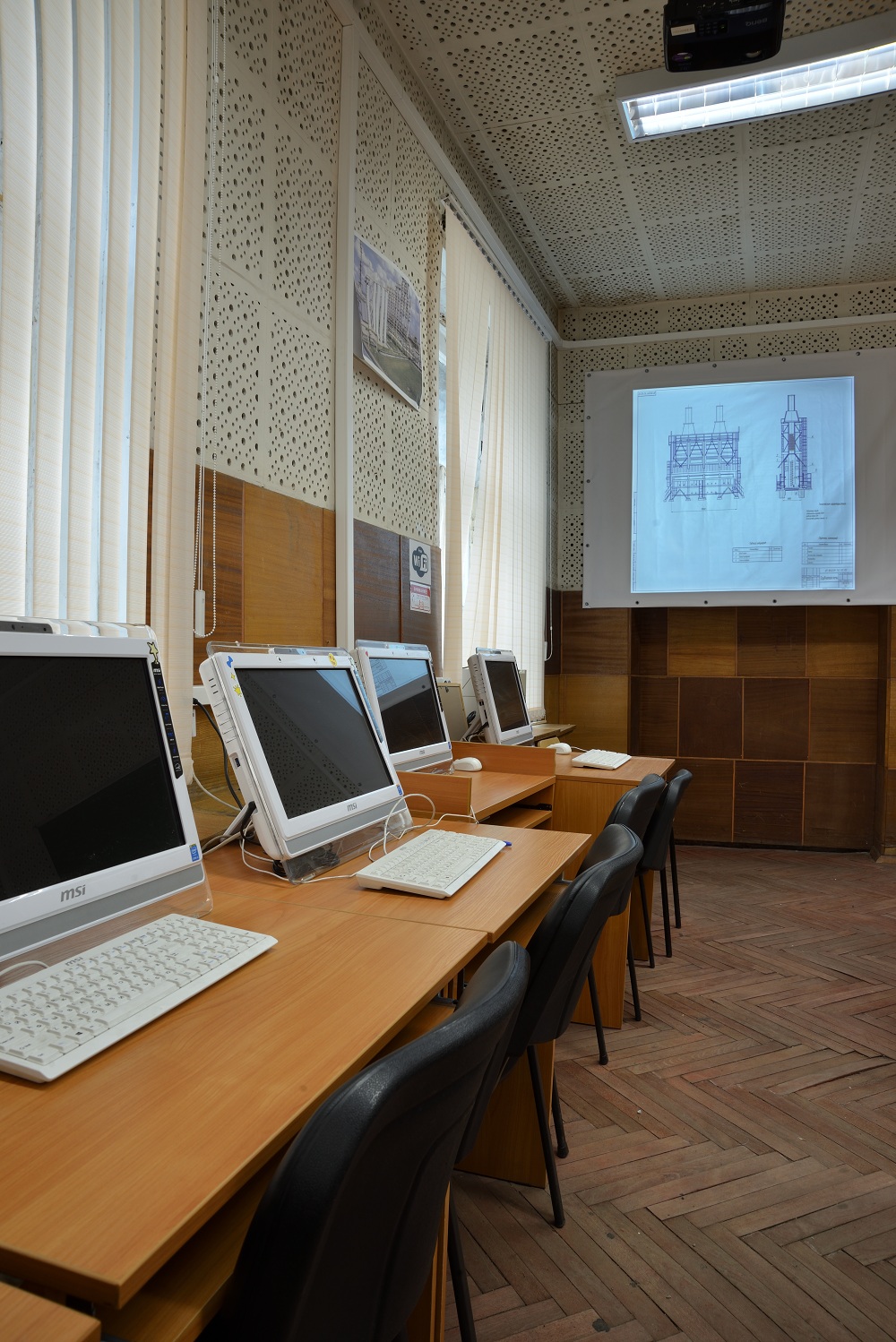
- Catalyst technology
- Catalysts and catalytic processes of hydrogen energy
- Catalysts of oil refining processes
- Catalytic processes in environmental protection
- Catalytic treatment of gas emissions and wastewater
- Diagrams of the state of multicomponent systems
- Equipment of modern catalytic productions
- General chemical technology (GCT)
- Heterogeneous processes of inorganic substances technology
- Industrial catalysis
- Industrial catalytic processes
- Introduction to the theory of catalysis
- Kinetics of catalytic processes
- Kinetics of processes of inorganic substances technology
- Life safety
- Mining and chemical raw materials
- Optimization of chemical and technological processes
- Physicochemical fundamentals of inorganic substances technology
- Scientific foundations of catalysis and adsorption
- Scientific foundations of preparation of catalysts
- Technological equipment
- Technology of electrothermal production
- Technology of mineral fertilizers
- Technology of powdered materials for functional purposes
- Technology of single crystals and highly purified substances
- Theoretical foundations of catalysis
- Theory of high-temperature processes and reactors
The Department was formed in 1967 by Professor V.B. Aleskovsky, a corresponding member of the Russian Academy of Sciences. The first chemical engineers and technologists graduated from the Department in 1969. Professors S.I. Koltsov and A.A. Malygin, as well as other scientists at the Institute of Technology, devised a classification of chemical reactions on the surface of solids, methods of matrix synthesis of individual solid compounds, and local surface modification (molecular layering method), which included the use of redox processes in conjunction with proton substitution reactions of hydroxyl groups. The Department investigates the synthesis of multicomponent mono- and poly-layers as well as the impact of cross-functional interactions on the formation and properties of the resultant solid-state nanostructures. Leading LLIT scientists made major contributions to the establishment and advancement of both the Department and the scientific school of chemistry of highly structured compounds, which is still led by Corresponding Member of the Russian Academy of Sciences V.B. Aleskovsky. Researchers, postgraduates, and students work on the challenges of solid-state chemistry and solid-state electronics under the supervision of top experts. Many Department alumni have senior positions in industry, various branch institutions, and institutes of the Russian Academy of Sciences. Doctor of Physical and Mathematical Sciences S.A. Kukushkin, for example, is one of the most distinguished scientists in the field of the theory of phase transitions in dispersed systems, and Doctor of Chemical Sciences S.K. Gordeev is the head of the laboratory in the Materials Science Research Institute. Now the Department is headed by Doctor of Chemical Sciences, Professor A.A. Malygin.
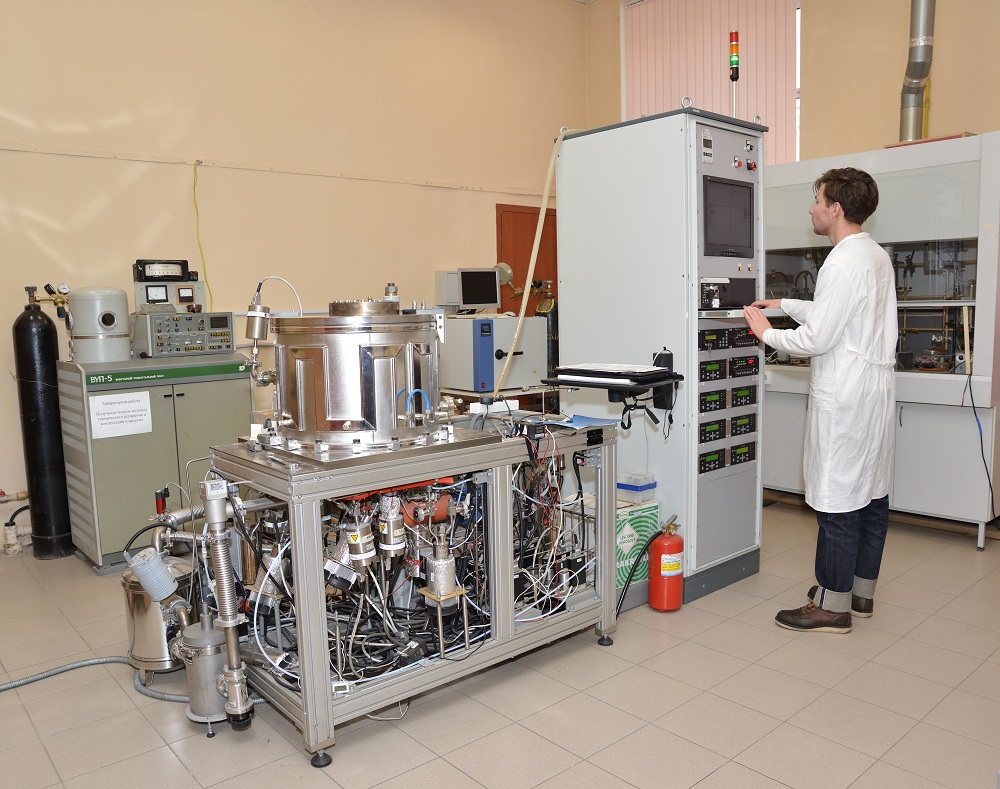
- Chemical foundations of nanotechnology
- Chemistry and technology of electronic equipment materials
- Computer modeling of technological processes in solid-phase electronics
- Film and composite materials of electronic equipment
- Information technology in solid-state materials science
- Physical chemistry of solid-state material
- Physical electronics and electronic devices
- Technological foundations of micro- and nanoelectronics
- Technology of materials and equipment for the production of single crystals, materials, and electronic products
The Department was established in 1971. It is housed in a historic building erected in the 1850s by architect F.F. Beckman. Its first director was B.V. Ilyin, who contributed world-famous scientific achievements to the field of nonlinear automated control systems. Professor V.V. Kashmet was heavily involved in the development of automated control systems for test stands. He was named head of the Institute of Technology's Department of General Physics in 1988. Work on the automatic design of unique components from the class of chemical compounds with specified energetic properties was carried out under the supervision of Associate Professor V.L. Rukin. The professor, who was a member of the Academic Council, founded and led the institute-wide laboratory of automated learning systems and chaired the faculty's teaching and methodological committee. The Department began working in the field of artificial intelligence in 1985. Responding to the demands of the times, the Department's team worked from 2002 to 2006 to transition the Computer Science and Computer Engineering curricula to a multi-level system of training engineers, bachelors, and masters. The Department offers two bachelor's programs, namely Computer-aided Design Systems and Automated Information Processing and Control Systems. Since 2006, the Department has enjoyed the status of a leading science and education center in St. Petersburg in the fields of information and telecommunication systems and technologies. Today, the Department is headed by Doctor of Technical Sciences, Honored Worker of Higher Education of the Russian Federation, Professor T.B. Chistyakova.
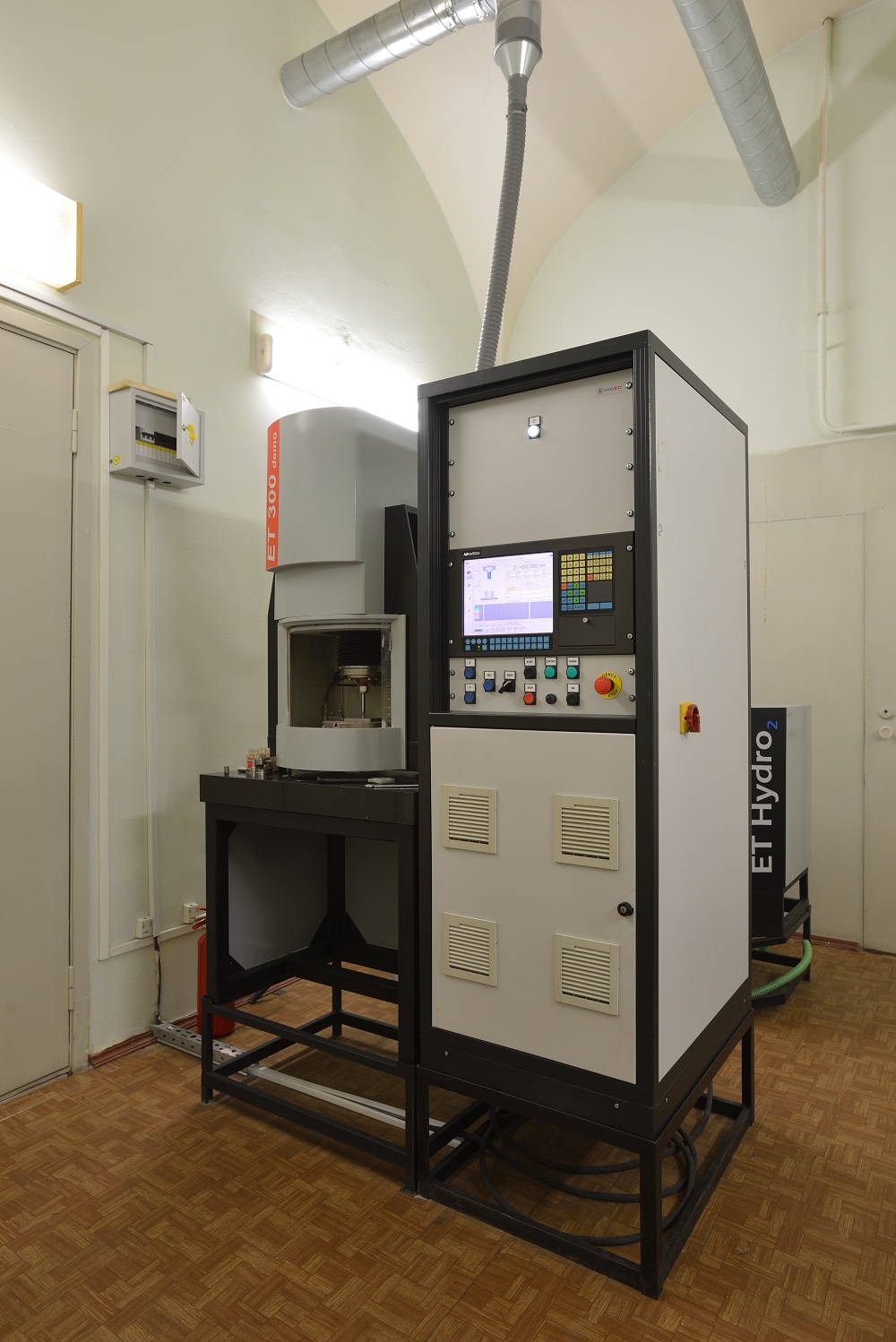
- Computer science
- Computing systems, networks, and telecommunications
- Databases
- Development of software systems
- Internet technologies
- Linguistic and software support of automated information systems
- Operating systems
- Programming
The Council of Rectors of Leningrad Universities was created on December 29, 1972. The organization confronted the most essential tasks: developing ideas for the growth of higher education in Leningrad, organizing exchanges of experience between universities, and unifying the work of universities to raise teacher qualifications. The Council of Rectors created an interuniversity scientific basis and oversaw the creation of comprehensive scientific initiatives by universities.
V.B. Aleskovsky, the then rector of LLIT, served as the Council's first chairman (1972-1977). Ordinary members of the Council in various years were V.A. Proskuryakov, rector of Technolozhka (1975-1985), and A.S. Dudyrev (1985-2010). The Council also featured LLIT alumni who went on to become rectors of other institutions, such as I.I. Orekhov, V.P. Panov, and L.Ya. Tereshchenko. LLIT established an experimental base in 1963, with a focus on experimental research in the fields of chemistry and technology of energy-saturated substances and materials. The new lab engaged students from the Faculty of Chemical Engineering and Technology. In 1969, it received the official name of the Special Design and Technology Bureau (SDTB) “The Technologist”. The outstanding equipment at the SDTB enabled it to carry out improvements ranging from primary synthetic and prescription research to the organization and manufacture of trial batches of energy-intensive chemicals and formulations.
The Department was established on the foundation of the All-Union Scientific Research Institute of Antibiotics and Enzymes for Medical Purposes in 1976. It was led by a well-known molecular biologist and corresponding member of the Academy of Medical Sciences, Doctor of Biological Sciences I.M. Tereshin. From 1982 to 2015, the Department was led by Professor A.I. Ginak, a specialist in the molecular mechanisms of biologically active substances. Professor A.I. Ginak, a corresponding member of the Russian Academy of Natural Sciences and Doctor of Chemical Sciences, was known for his research in the field of solid-phase synthesis of organic compounds. Employees of the Department actively involve graduate and undergraduate students in their research activities. They maintain collaboration with a number of research institutions in Russia's north-western region. Professor E.Y. Vinogradov's group has spent many years studying the biology of the bacterium Bacillus mucilaginous, a saprophytic microbe with remarkable abilities: these bacteria can swiftly degrade silicate-containing materials, which can be utilized in a variety of fields, including mining, the oil industry, agriculture, ceramics technology, and even medicine. The Department's personnel were accorded state status as a scientific school of biotechnology in 2007. Today, the Department is headed by Doctor of Biological Sciences, Associate Professor D.O. Vinokhodov.
- Bioinformatics
- Biological text systems
- Bioorganic chemistry
- Bioorganic synthesis technology
- Biotechnology of animal and human cells
- Biotechnology quality management
- Biotesting
- Biotransformation of organic compounds
- Chemistry of natural compounds and their synthetic analogues
- Fundamentals of biochemistry and molecular biology
- Fundamentals of bioenergy
- Fundamentals of biokinetics
- Fundamentals of bionanotechnology
- Fundamentals of bioorganic chemistry
- Introduction to genetic engineering
- Matrix processes in biological systems
- Modern production of diagnostic drugs
- Modern production of vaccine formulations
- Molecular biology of the cell
- Molecular biotechnology
- Molecular virology and immunology
- Processes and devices of biotechnology
- Search for scientific and technical information
In 1971, it was decided to merge the posts of the director/chief designer of the Technologist SDTB and the dean of the Faculty of Chemical Engineering and Technology at LLIT, allowing for the successful integration of teaching, research, and industrial production. As a result, B.V. Gidaspov, who was highly regarded as an exceptional research policymaker, was selected to oversee the Technologist.
SDTB conducted research and developed technologies for obtaining a novel class of nitrogen-containing chemicals under his direction. Employees at the Technologist devised an innovative thermo-oxidative method for converting aromatic nitro compounds at high temperatures, allowing them to accelerate the process of acquiring goods that were previously thought to be unattainable.
In addition, pyrotechnic electric current generators, command-and-control pyrotechnic devices, pyrotechnic cutters, and other novel pyrotechnic devices and compositions were developed at the SDTB.
The Department was founded in 1975 as the USSR's first university department with a biotechnological focus. It was led by Doctor of Technical Sciences, Professor V.I. Yakovlev. The Institute introduced previously unseen courses in Microbiology, Biochemistry, and Biotechnology. The Department currently offers bachelor’s degree in biotechnology and master's degree in industrial bioengineering. It educates highly skilled individuals in the fields of Industrial Ecology and Biotechnology, and Biological Sciences (educational program of Biotechnology, including Bionanotechnology). Students participate in a variety of industrial practices and research, and work on their own theses and dissertations. They also intern at the State Research Institute of Highly Purified Biological Products, the Saint-Petersburg Pasteur Institute, the Institute of Agricultural Microbiology, the All-Russian Institute of Plant Protection, the St. Petersburg Research Institute of Vaccines and Serums, the Federal Center for Conservation of Library Collections of the National Library, OAO Samson-Med, OOO NPK ILMA ECO, BioMedia, and ZAO Igristye Vina (Sparkling Wines). Many graduates go on to work for these entities. Today, the Department is headed by Candidate of Technical Sciences, Associate Professor T.B. Lisitskaya.
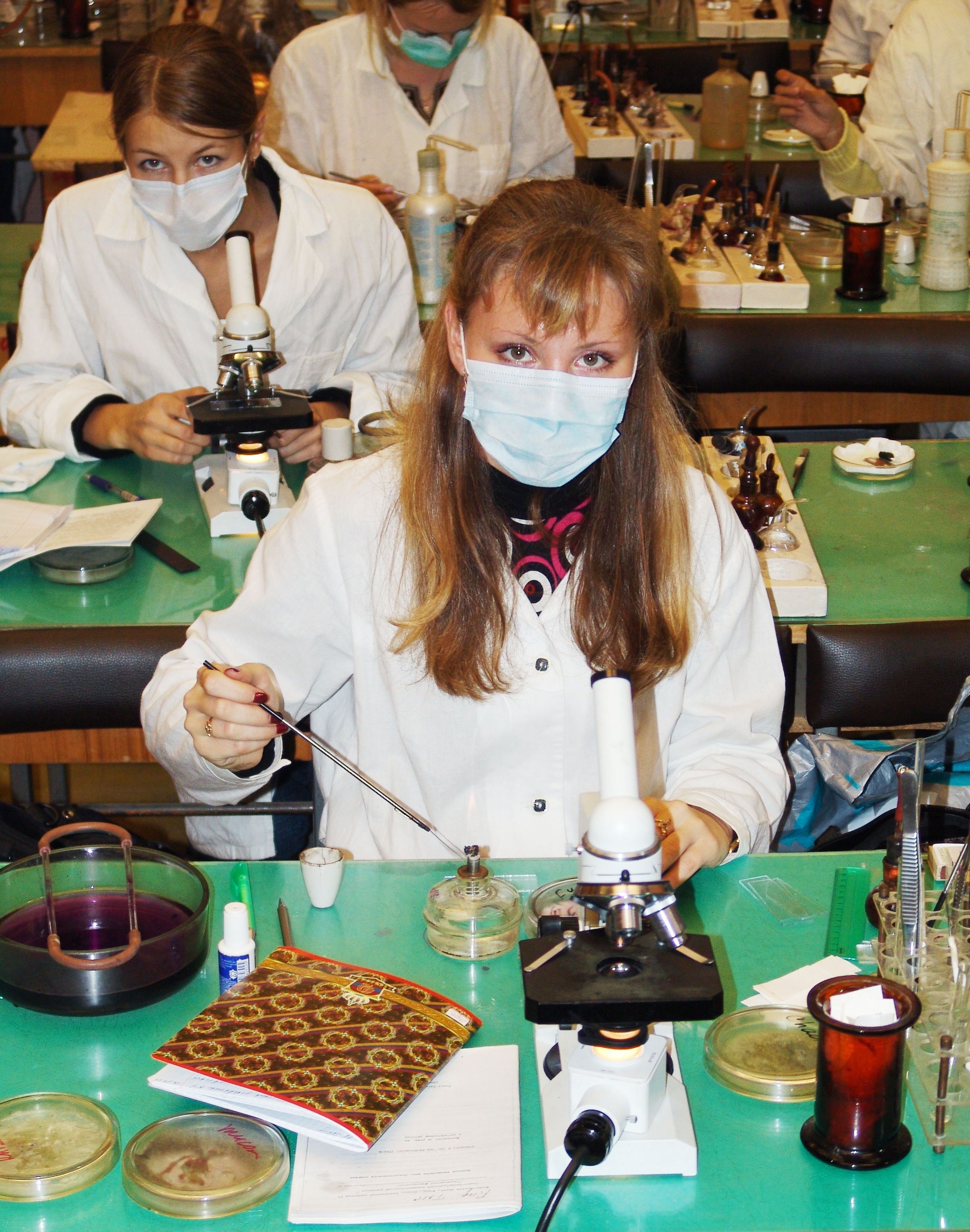
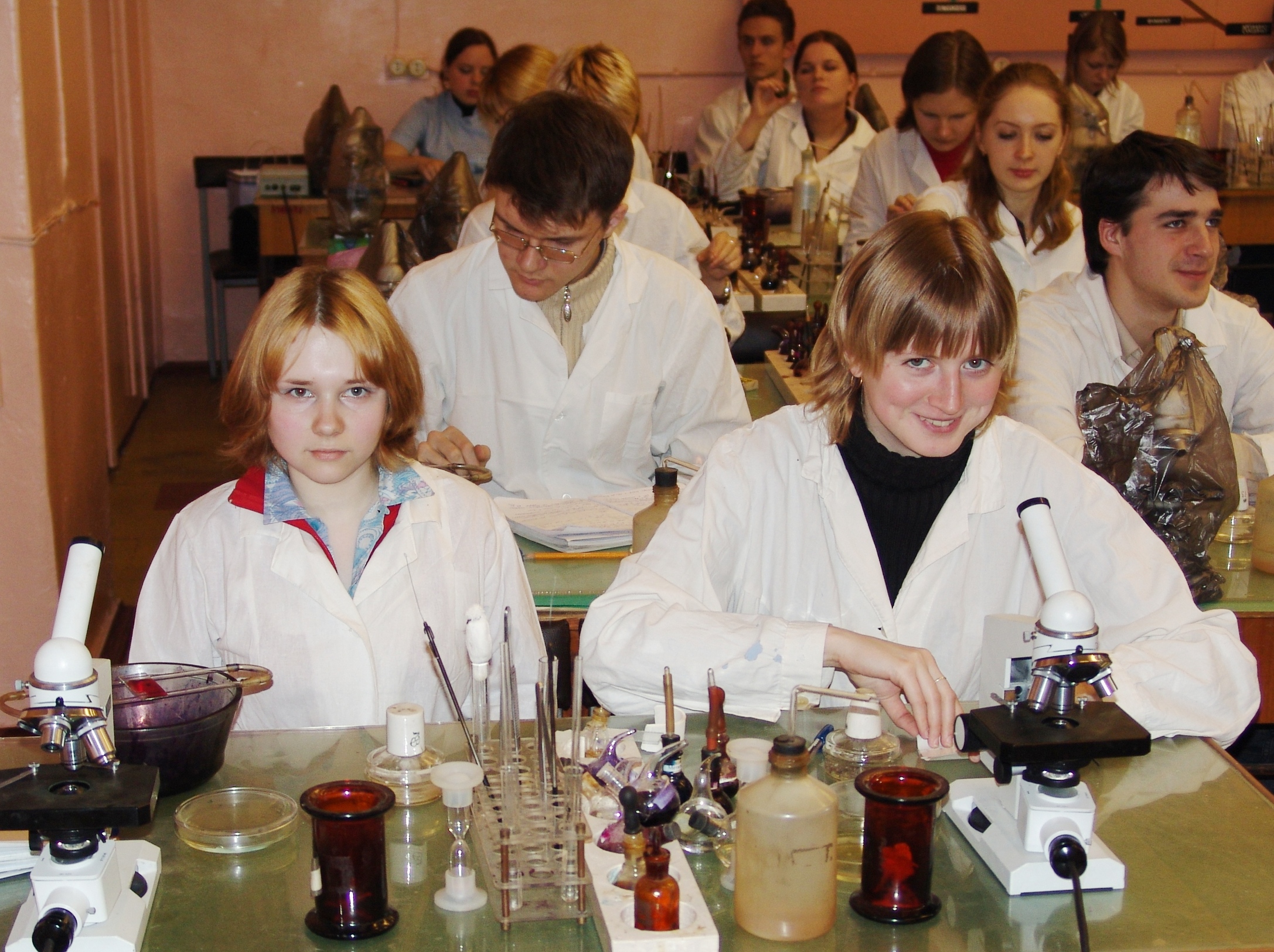
- Basics of bionanotechnology
- Basics of risk management in biotechnology
- Biocatalysis in industry
- Biochemistry
- Biochemistry of microorganisms
- Bioinformatics
- Biological statistics
- Bionanotechnology
- Bioorganic chemistry
- Biotransformation of organic substances
- Chemistry of biologically active substances
- Environmental biotechnology
- General biology
- General biotechnology
- General chemical technology
- Genetic engineering
- Industrial biotechnology
- Introduction to the specialty and the basics of scientific research
- Matrix processes in biological systems
- Metrology, standardization, certification and quality management of biotechnology
- Microbiology
- Molecular biology
- Molecular biotechnology
- Physico-chemical methods of synthesis
- Processes and apparatuses of biotechnology
- Technology of bioorganic synthesis
In the mid-1970s, the Institute created a center for educational television, which allowed the process of education to become more technologically advanced. The number of classrooms equipped with television sets, especially those capable of transmitting color images, grew with every passing year.
Among many other projects, the Institute's experts researched the development of lithium chemical current sources. Many advancements were made in collaboration with the All-Union Research Battery Institute (now known as the Istochnik (Source) Research Battery Institute). LLIT created technologies that matched the industry's needs of the day. Technolozhka’s advances were utilized in the fields of nuclear energy, fertilizer manufacturing, pharmaceutics, the production of plastics and other polymers, and to overcome environmental concerns. In 1964, LLIT took over patronage of local school No. 281 specializing in chemistry, which was located nearby on Sovetsky pereulok, 4.
In the 1970s, the Institute's faculty began to offer optional chemistry lessons in schools, organize Olympiads and evening chemistry tournaments, and deliver career speeches. The Young Chemist and Young Physical Chemist preparatory courses were established at LLIT in the 1971/1972 academic year.
In the fall of 1971, a Junior Technological Faculty was established at the LLIT-sponsored school No. 307. Schoolchildren were taught by the top instructors from the departments of mathematics, physics, and inorganic chemistry, as well as renowned scientists and professors from other disciplines. The institution ran a correspondence school for young scientists where nonresident high school students could strengthen their skills in chemistry, physics, and mathematics. During spring break, students learned about LLIT and competed in Olympiads.
On January 13, 1972, the Board of the RSFSR Ministry of Higher and Secondary Special Education voted to expand LLIT into a technical university. It was equated with universities in terms of stature.
LLIT created the country's first Department of Environmental Technology and Labor Protection in 1973.
The building on the 7th Krasnoarmeyskaya St. was reconstructed as a classroom facility for the Faculty of Mathematics and Technology in 1974.
A number of LLIT professors were nominated for the posts of rectors of other universities in the city: Corresponding Member of the Academy of Sciences of the USSR Professor V.B. Aleskovsky (Rector of Leningrad State University), Professor I.D. Kugushev (Rector of Leningrad Technological Institute for the Pulp and Paper Industry), Professor L.Ya. Tereshchenko (Rector of Leningrad Technological Institute of Textile and Light Industry), and Professor I.I. Orekhov (Rector of Leningrad Technological Institute of the Refrigeration Industry). In 1976, according to the results of the socialist competition of universities in the USSR, the Institute of Technology took 2nd place, and among universities in the Russian Federation, it took 1st place.
Since 1975, the Institute of Technology's Experimental Design and Technology Bureau (EDTB) “Crystal” has specialized in the development of technologies for the synthesis of carbon and mineral adsorbents, deep oxidation catalysts, and regenerated chemical absorbers. Here, integrated purification of simulated atmospheres from harmful compounds used on submarines and space stations was developed. In the framework of Crystal, the Department of Glass Materials and Glass Composites emerged, where novel sealing materials and treatment processes were created.
Since 1979, measurement equipment has been developed on the basis of EDTB Crystal, with a pilot plant utilized for production. Devices for measuring leakage, gas monitoring sensors, and small-sized gas meters, including oxygen meters, were produced there. They are required for cleaning and drying air in enclosed inhabited objects where conditions for people's lives and work must be artificially created and maintained. These advancements have also been employed in the defense industry and in monitoring environmental pollution.
LLIT was also involved in retraining engineers for extra challenges. For example, the Department of Equipment and Robotics of Plastics Processing retrained more than 100 engineers in non-destructive testing procedures for polymer goods between 1978 and 1988.
On May 28, 1982, a memorial plaque in honor of D.I. Mendeleev (1834-1907) was unveiled on the facade of the main building of the Institute.
The use of computers in LLIT began in the early 1980s. Students had the opportunity to master specializations using cutting-edge technology, which dictated the future progress of science.












